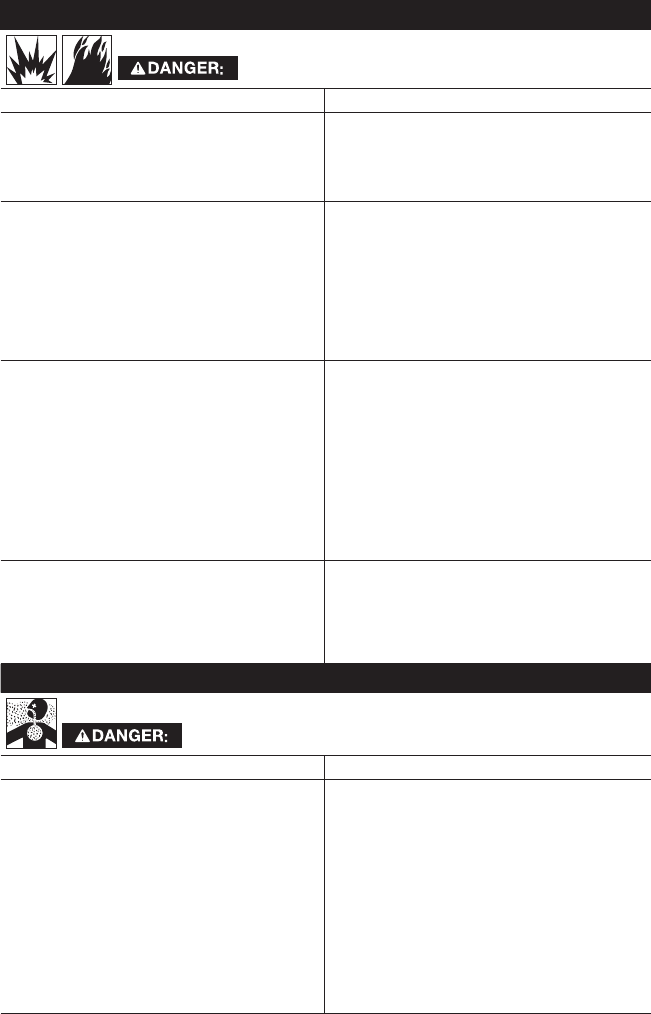
4 - ENGA17883
SAVE THESE INSTRUCTIONS
HAZARD
RISK OF EXPLOSION OR FIRE
WHAT CAN HAPPEN HOW TO PREVENT IT
• It is normal for electrical contacts
within the motor and pressure
switch to spark.
• Always operate the compressor in a
well ventilated area free of combus-
tible materials, gasoline, or solvent
vapors.
• If electrical sparks from compressor
come into contact with flammable
vapors, they may ignite, causing fire
or explosion.
• If spraying flammable materials,
locate compressor at least 20 feet
(6.1 m) away from spray area. An
additional length of air hose may be
required.
• Store flammable materials in a
secure location away from com-
pressor.
• Restricting any of the compressor
ventilation openings will cause seri-
ous overheating and could cause
fire.
• Never place objects against or on
top of compressor.
• Operate compressor in an open
area at least 12" (30.5 cm) away
from any wall or obstruction that
would restrict the flow of fresh air to
the ventilation openings.
• Operate compressor in a clean, dry
well ventilated area. Do not operate
unit indoors or in any confined area.
• Unattended operation of this prod-
uct could result in personal injury
or property damage. To reduce the
risk of fire, do not allow the com-
pressor to operate unattended.
• Always remain in attendance with
the product when it is operating.
• Always turn "Off" and unplug unit
when not in use.
HAZARD
RISK TO BREATHING (ASPHYXIATION)
WHAT CAN HAPPEN HOW TO PREVENT IT
• The compressed air directly from
your compressor is not safe for
breathing. The air stream may con-
tain carbon monoxide, toxic vapors,
or solid particles from the air tank.
Breathing these contaminant's can
cause serious injury or death.
• Air obtained directly from the com-
pressor should never be used to
supply air for human consumption.
In order to use air produced by this
compressor for breathing, suitable
filters and in-line safety equipment
must be properly installed. In-line
filters and safety equipment used
in conjunction with the compressor
must be capable of treating air to all
applicable local and federal codes
prior to human consumption.


















